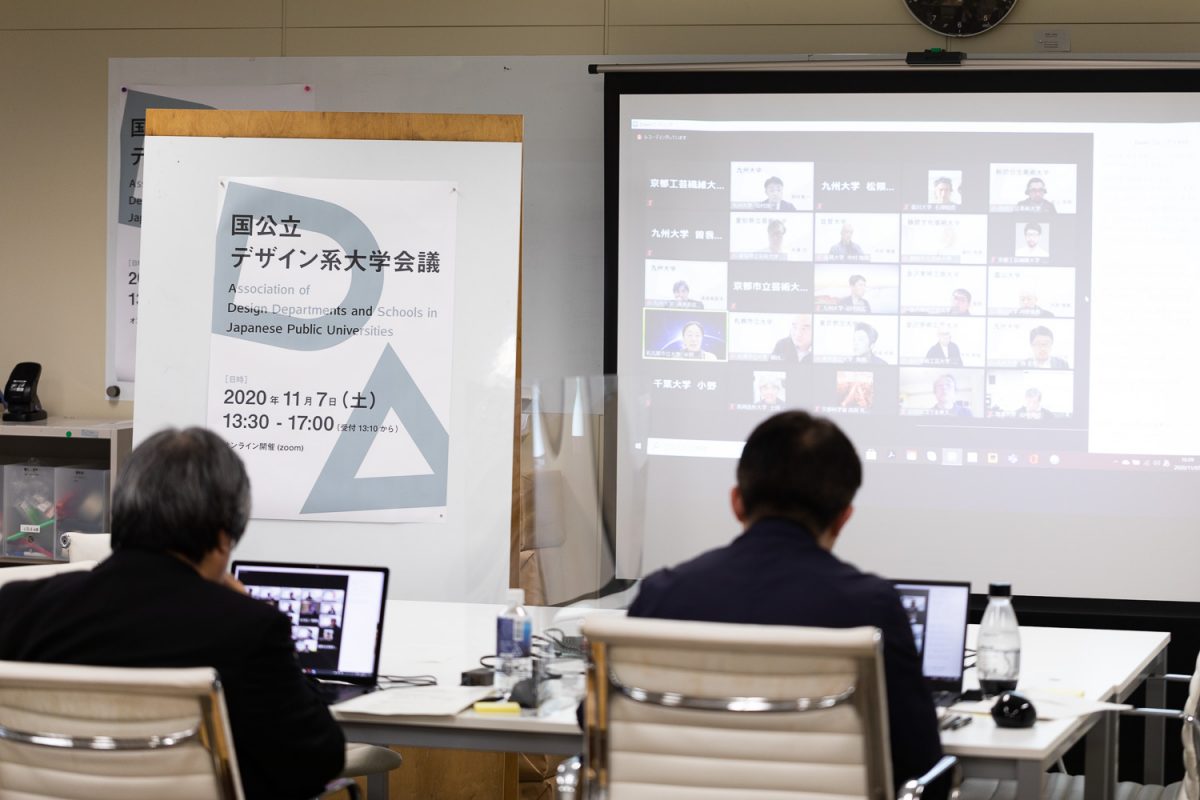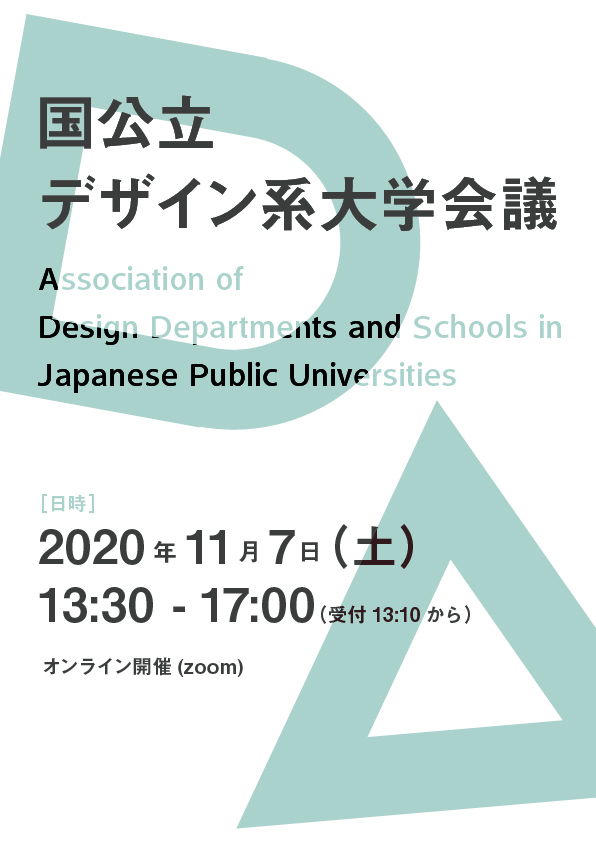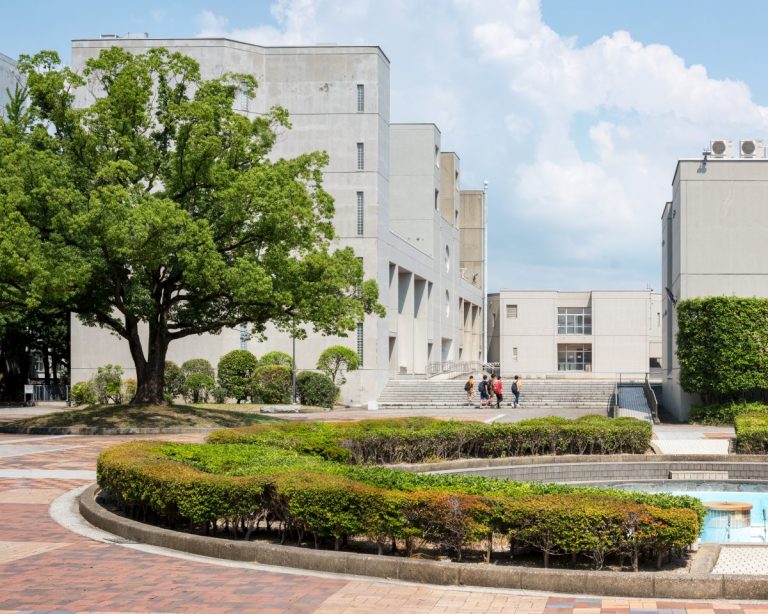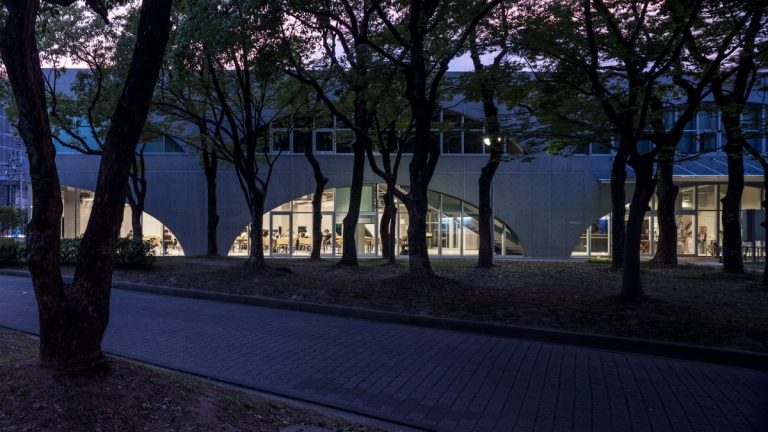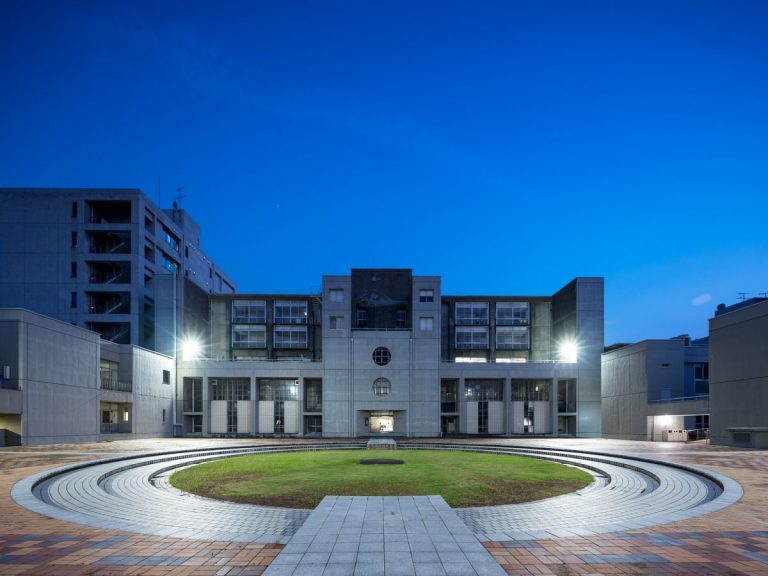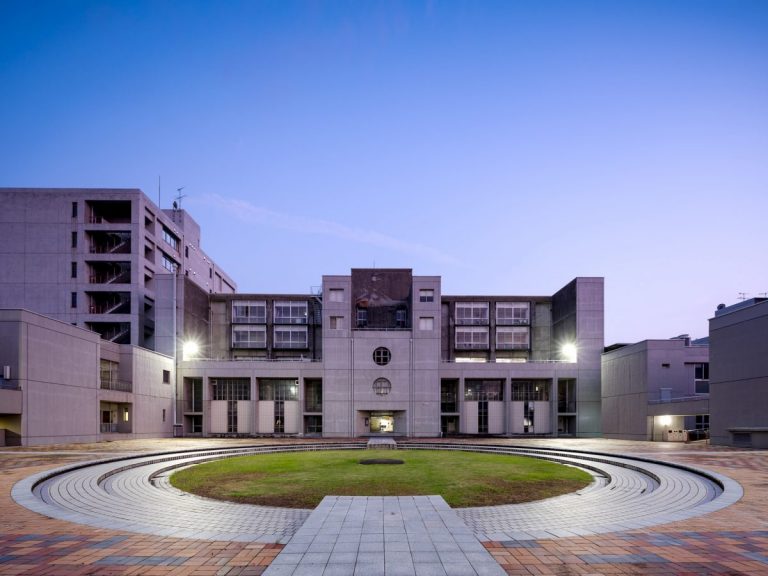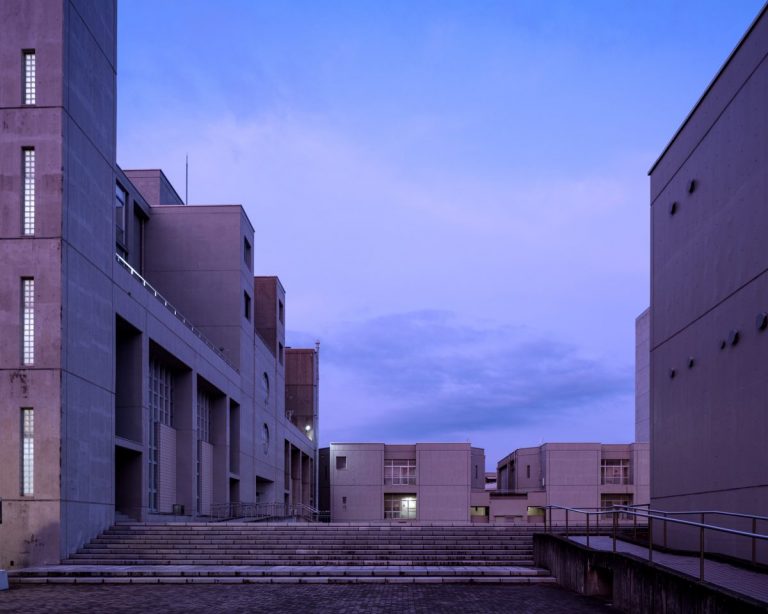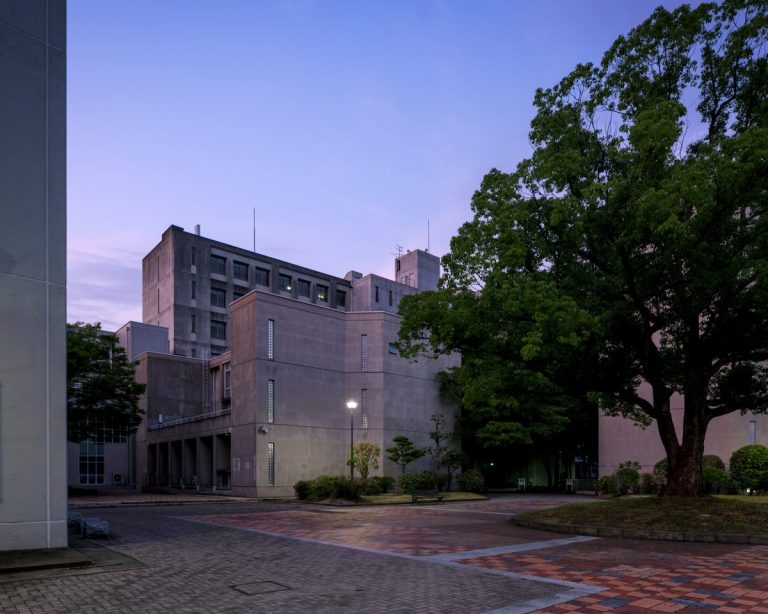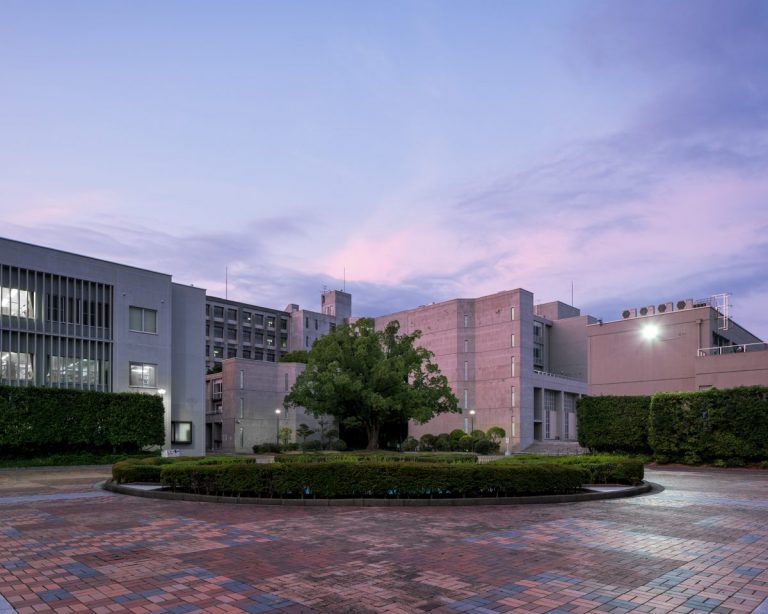The 2nd Association of Design Departments and Schools in Japanese Public Universities Conference
This conference was attended by 22 public universities with design faculties and departments, and 17 of the universities participated in an online symposium. In 2020, universities were confronted with the big questions of “What is a university?”, “What is education?” and were asked to come up with concrete measures amidst the unprecedented spread of COVID-19 and uncertainty about the future. This second conference’s theme was “Coronavirus: New Lifestyle and Design,” and a lively question-and-answer session was held after the sharing of case studies from each university. In the first half of the 2nd Association of Design Departments and Schools in Japanese Public Universities Conference, Saga University, Chiba University, and Kyoto Institute of Technology reported on what they have been doing at their universities, what new knowledge they have gained, and their teaching methods in 2020, the year of the new coronavirus infection in the world. Each of them shared the efforts they have put in amid the exploration.
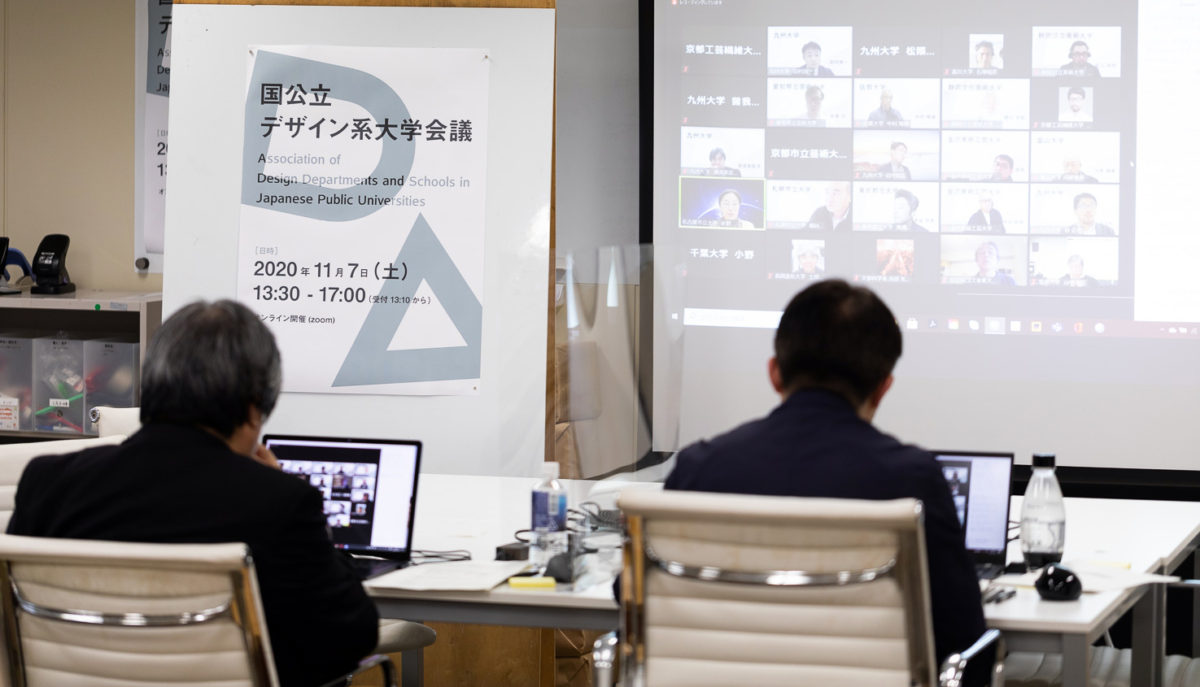
How do you see “society after coronavirus”?
Various names have been created for the current social situation, such as “with coronavirus” and “after coronavirus”. However, the society affected by the new coronavirus will not be the same as before. In recent years, design is expected to function more as a solution to social issues, and one of the major requirements is how to understand society itself. Specially Appointed Professor Daijiro Mizuno of the KYOTO Design Lab at Kyoto Institute of Technology gave a presentation titled “(Re)generating Japan – Speculating a New “New Normal” after Coronavirus” about the exercises he conducted during the period of coronavirus pandemic. According to Professor Mizuno, “I wanted to think about new spaces, environments, and lifestyles that emerge from the dichotomies of virtual space and real space, information environment and physical environment, and digital and analog”. He announced that he was working on the theme of thinking about “possible lifestyles” after coronavirus, rather than designing “countermeasures” for coronavirus. Professor Takatoshi Nakamura of Saga University gave a presentation titled “Resilience for Creation – What kind of ability to survive in this future?” In the project that the students voluntarily launched, he saw the students’ ability to survive flexibly according to the situation without losing heart even in difficult times.
How do you structure a class online?
For each university, we have selected some of the online lessons and introduced in the following. Associate Professor Kenta Ono of Chiba University conducted an exercise on “developing new digital tools to improve designers’ skills”. He shared his experience of inviting several part-time lecturers from outside the university to participate in the exercise, taking advantage of the online feature, and they all accepted positively. Students in the second and third years worked on their assignments under several criteria, such as “it must run on the platform (p5*JS)” and “it must run on a normal PC or smartphone”. The project’s purpose was to have the first-year students do an online UX evaluation test of their work at the end of the project. By communicating with first-year students who have not yet been able to attend the university, we were able to convey the atmosphere of the department and the attitude of the designers, who think of positive solutions and implement them even in difficult situations. We invited people outside the university to participate in the exercise at the Kyoto Institute of Technology. A total of 105 people, 36 groups, came from North America, the United Kingdom, Kanto, Kansai, Chugoku region, and Kyushu-Okinawa. Participants came from design departments and various other faculties, making it possible to take an interdisciplinary approach. We also had many researchers participate as observers. Some of the participants used software to generate artificial voices and create VR spaces. It was thought-provoking to see the possibilities of design that is not limited by the individual’s body or location.
How do we ensure student autonomy?
Although online classes allow students to be free from time and place, many universities faced the challenges of keeping students motivated and eliciting independence. In Saga University’s case, as soon as all the classes were online, the student group “Gechide no Tamago” (ge = art, chi = community, de = design) offered to set up a support website for new students. The site was launched to provide a wide range of information, including manuals for study tools and university life information from a student’s perspective. It was accessed more than 70,000 times in two months. This site has been operating for more than half a year, and it was developed into a platform for connecting the community and businesses. Workshops, study groups, and projects are now being implemented. Furthermore, since it was impossible to hold an on-site open campus, the students themselves created a virtual campus. On the VR open campus, more than 3,000 high school students visited and participated as avatars, and university students answered questions from them. Professor Nakamura said, “Despite the unavoidable circumstances of the coronavirus pandemic, there was much for the faculty to learn from the resilient attitude of the students, who discovered issues on their own and proceeded to solve them.”. He concluded that there remains a challenge in developing students, who cannot adapt to such a rapidly changing environment. For the classes at the Kyoto Institute of Technology, we used the breakout room group function of Zoom to value the participants’ independence above all else. We designed the class to encourage free discussion among the participants. In addition, we implemented virtual office hours with access to the faculty members, so that those who wanted to ask questions can come freely during those hours. In the post-lesson questionnaire, we asked whether the timing and frequency of advice from the instructors were sufficient, about 20% of the participants answered that “I don’t need such time in the first place”. Many people communicated only by interacting with each other, which was unexpected for us. Specially Appointed Professor Mizuno shared that he had reaffirmed that “seemingly useless time and spaces where students get along, exchange opinions, and enhance ideas in the absence of faculty members” such as laboratories, common rooms, and workshops are actually an important function of a university.
In the latter half of the meeting, the participating universities many questions raised about the case studies, and a lively discussion ensued. As the second meeting of this series, we were able to deepen our understanding of the conference as a place to share information related to “design education.
Click here for details.
Date
November 11th, 2020
Venue
Online
Contact
Design Academia Administration Office
https://design-academia.net/en/contact-us/
![九州大学イノベーションデザインネクスト[KID NEXT]](https://www.kidnext.design.kyushu-u.ac.jp/wp-content/themes/kidnext/img/logo_header.png)
